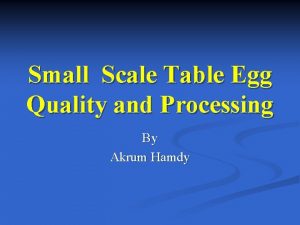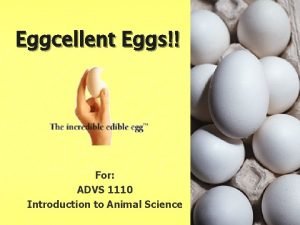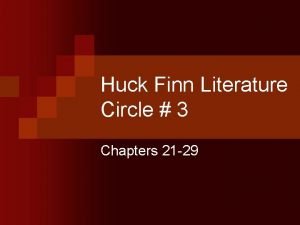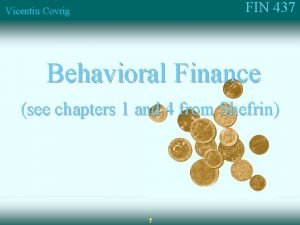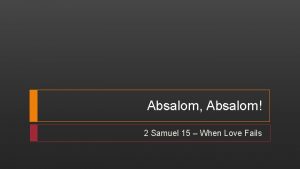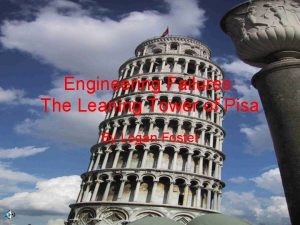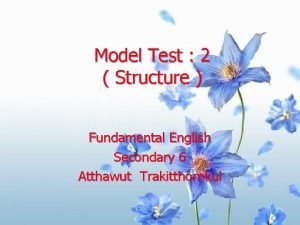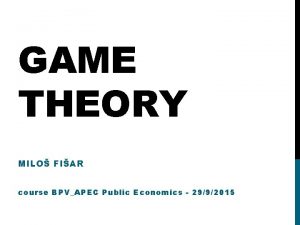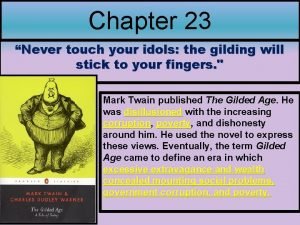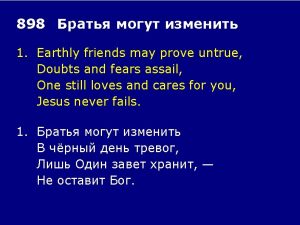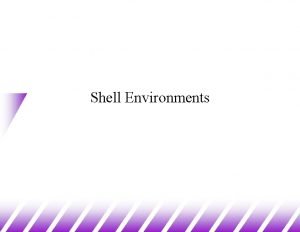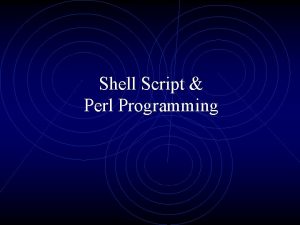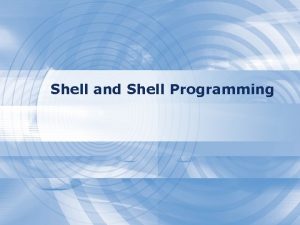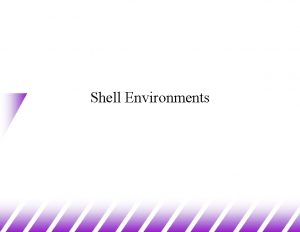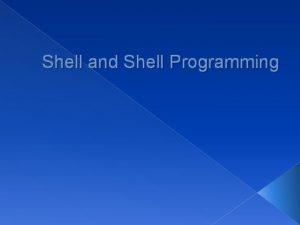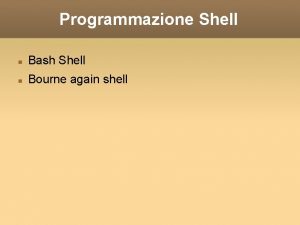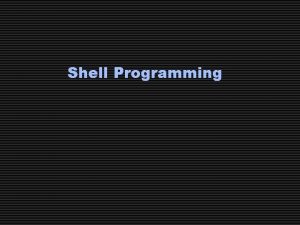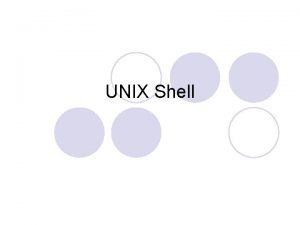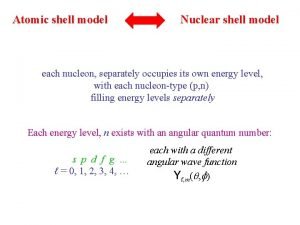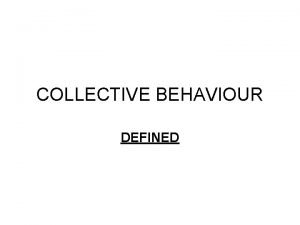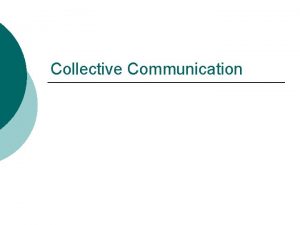Collective Model Collective Model Shell model fails for






















- Slides: 22

Collective Model

Collective Model Shell model fails for electric quadrupole moments. • Nuclei Z N Qobs/Qsp 17 O • 8 9 39 K • 19 20 • 175 Lu 71 104 • 209 Bi 83 126 Character doubly magic+1 n doubly magic -1 p between shells doubly magic+1 p j Qobs. Qsp. 5/2 -2. 6 3/2 +5. 5 7/2 +560 -0. 1 +5 -25 20 1. 1 -20 9/2 -30 1. 1 -35 Many quadrupole moments are larger than predicted by the model. Consider collective motion of all nucleons

Collective Model • Two types of collective effects : nuclear deformation leading to collective modes of excitation, collective oscillations and rotations. • Collective model combines both liquid drop model and shell model. • A net nuclear potential due to filled core shells exists. • Nucleons in the unfilled shells move independently under the influence of this core potential. • Potential is not necessarily spherically symmetric but may deform.

Collective Model • Interaction between outer (valence) and core nucleons lead to permanent deformation of the potential. • Deformation represents collective motion of nucleons in the core and are related to liquid drop model. • Two major types of collective motion – Vibrations: Surface oscillations – Rotations : Rotation of a deformed shape

Vibrations • A nearly closed shell should have spherical surface which is deformable. Excited states oscillate about this spherical surface. • Simplest collective motion is simple harmonic oscillation about equilibrium. W=0 static deformation, due to Coulomb repulsion. A<150 it is negligible. V V x W=0 V V x W>0, , <x>=0 V x W<0, <x>=0 deformation

Vibrations Average shape is spherical but instantenous shape is not.

Vibrations • It is convenient to give the instantaneous coordinate R(t) of a point on the nuclear surface at ( , ) in terms of the spherical harmonics , Due to reflection symmetry

Vibrations =0, vibration: Monopole R(t)=Ravr + 00 Y 00 Breathing mode of a compressible fluid. The lowest excitation is in nuclei with A grater than about 40 at an energy above the ground state E 0 80 A-1/3 Me. V

Dipole Vibrations • λ=1, Vibration: Dipole

Dipole Vibrations • The dipole mode corresponds to an overall translation of the centre of the nuclear fluid. Proton and neutron fluid oscillate against each other out of phase. It occurs at very high energies, of the order 10 -25 Me. V depending on the nucleus. This is a collective isovector (I = 1) mode. It has quantum numbers J =1 - - in even-even nuclei, occurs at an energy • E 1 77 A-1/3 Me. V • above the ground state, which is close to that of the monopole resonance • Energy of the giant dipole resonance should be compared with shell model energy • E 1 77 A-1/3 Me. V=wg Eshell 40 A-1/3 Me. V=w 0

Quadrupole Vibrations • λ=2, Vibration The shape of the surface can be described by Y 2 m m=± 2, ± 1, 0. In the case of an ellipsoid R=R(θ) hence m=0.

Quadrupole Vibrations • Quantization of quadrupole vibration is called a quadrupole phonon, Jπ=2+. This mode is dominant. For most even-even nuclei, a low lying state with Jπ=2+ exists and near closed shells second harmonic states can be seen w/ Jπ=0+, 2+ , 4+. • A giant quadrupole resonance at E 2 63 A-1/3 Me. V

Quadrupole Vibrations • For a harmonic motion

Quadrupole Vibrational Levels of 114 Cd #of phonons E N=2 two-phonon triplet N=1 single-phonon state N=0 ground state

3 vibrations : Octupole modes with λ=3 w/ Jπ=3 can be observed in many nuclei.

Nuclear Rotations In the shell model, core is at rest and only valance nucleon rotates. If nucleus is deformed and core plus valance nucleon rotate collectively. The energy of rotation (rigid rotator) is given by

Nuclear Rotations • Solutions Parity But there is reflection symmetry so odd J is not acceptable. Allowed values of J are 0, 2, 4, etc.

Nuclear Rotations Energy levels of 238 U.

Nuclear Rotations Deformed nucleus with spin J • Let us now extend the arguments to a general case. Consider a nucleus with core plus one valance particle. The core give rise to a rotational angular momentum perpendicular to the symmetry axis-z so that Rz=0. The valance nucleon produces an angular momentum j

Nuclear Rotations

Nuclear Rotations K=0 is spinless. K≠ 0 spins of rotational bands are given

Nuclear Rotations • The ratio of excitation energies of the second to the first excited state is obtained by putting J=K+2 and J=K+1
 Shell cleanliness shell soundness shell
Shell cleanliness shell soundness shell Germinal disc in egg
Germinal disc in egg Your love never fails, it never gives up
Your love never fails, it never gives up Plasmier
Plasmier The same god who never fails
The same god who never fails Fin fails nnn
Fin fails nnn 2 de samuel 15
2 de samuel 15 Nothing fails like success
Nothing fails like success When all else fails standardize
When all else fails standardize Leaning tower of pisa fails
Leaning tower of pisa fails If love fails it was never love
If love fails it was never love Benjamin west contributed a great deal to american art: …
Benjamin west contributed a great deal to american art: … The game fiar
The game fiar Love never fails chapter 23
Love never fails chapter 23 Kontinuitetshantering i praktiken
Kontinuitetshantering i praktiken Typiska novell drag
Typiska novell drag Nationell inriktning för artificiell intelligens
Nationell inriktning för artificiell intelligens Vad står k.r.å.k.a.n för
Vad står k.r.å.k.a.n för Varför kallas perioden 1918-1939 för mellankrigstiden
Varför kallas perioden 1918-1939 för mellankrigstiden En lathund för arbete med kontinuitetshantering
En lathund för arbete med kontinuitetshantering Särskild löneskatt för pensionskostnader
Särskild löneskatt för pensionskostnader Tidbok
Tidbok Sura för anatom
Sura för anatom
